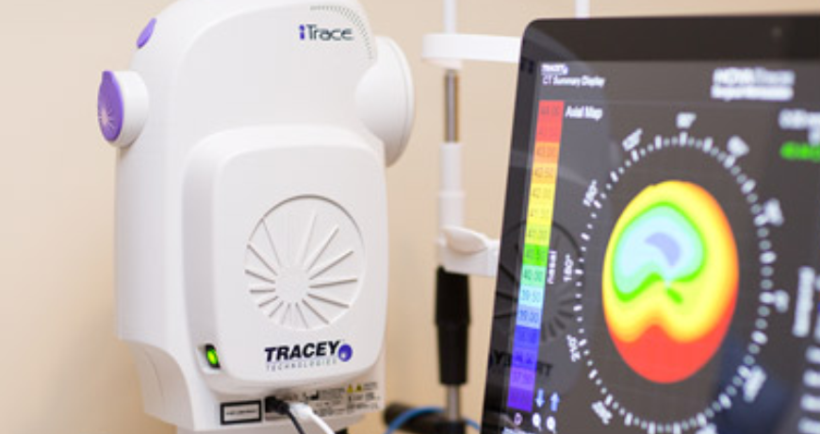Conventional means of sight correction, like glasses or contact lenses, deal with global parameters of eye refraction. Modern laser technologies enable a more finely controlled cornea reshaping with an array of points of varying corrections across the eye. These laser-based vision correction methods require accurate local parameter information across the eye to enable correction that achieves higher visual acuity.
One of our customers, Tracey Technologies, Houston, TX, came up with the idea for a single beam refractometer based on retina ray tracing for measuring eye refraction distribution. To accomplish this a low power infrared laser beam is sent into the eye and the deviation of position of the reflection from the retinal surface from the ideal position is measured to an accuracy within 2 microns (10^-6 meters). About a hundred such measurements are made across the eye in a fraction of a second and the data is used to compute the refractive index map of the eye.
A novel feature of this instrument is the acousto-optic deflector that moves the laser beam across the eye without the use any moving parts. Indus Instruments developed the electronics and the low level software for three generations of these ray tracing devices over a 10 year period. We currently manufacture the electronics under an OEM agreement with Tracey Technologies. The completed devices are shipped world wide as the Tracey Technologies iTrace Combination Ray Tracing Aberrometer/Topographers.


